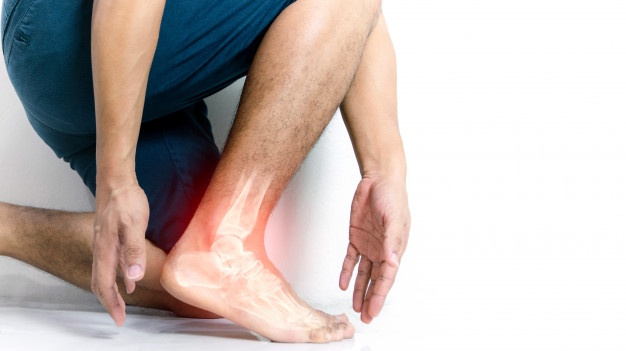
An ankle sprain is quite a common injury dealt with clinics and hospitals regularly (search for a family clinic near me if you’re in need) as well as usually results from a twisted ankle, or being turned in (outwards). The word sprain means an injury to the tissue, usually the tendons, ligaments, of your ankle. An injury can result from a fall, twisting your ankle while walking, or from playing sports. It can be caused by a number of reasons.
Ankle instability, which is turning in (outwards) or spinning (inwards) is one of the main causes of ankle injuries. When you turn or twist your foot the tendons are overstretched. There is then the inflammation that occurs because the tendons are now being pulled in different directions. This causes the bones to rub together. This can lead to swelling and bruising. If you have had previous ankle injuries, it is likely that the bone rubbing will happen again even with the additional stress and inflammation.
causes of ankle injuries

Swelling is also a symptom of an ankle sprain. If you have experienced a previous injury where there has been swelling after an impact, you could well expect that it will take time for the swelling to go down and not go away, especially if the injury is worse. Pain is also very common. The injury can cause a lot of pain as the tendons are rubbing against each other and this causes swelling.
There are many different treatments available to treat mri ankle sprain symptoms. They are mainly classified as being conservative treatments, which include resting the injured ankle, icing, and anti-inflammatory medication or steroid injection. However, these tend to have minimal effects on ankle instability. More invasive treatments, such as surgery and various injections are used where the swelling is too much and there is a risk of damaging the bones further.
There are three main types of ankle sprains – sports-related, acute, and chronic. A sports-related sprain refers to a direct blow to the affected joint. This can be a result of a fall or a sports injury such as twisting your ankle in a game. Acute instability refers to a shorter period of time with symptoms as the ankle will spasm after only a small trauma. Sports players are particularly susceptible to acute instability of the ankle as they train extensively and the repetitive motion of jumping and changing direction can easily lead to injury.
controlling the ankle with the weight

Chronic ankle instability occurs over months or years. It is caused by repeated stress to the ligaments. This occurs through an accidental injury or the overuse of the joint. Injuries can result from the way in which the ankle is held during walking or running, using large muscle groups such as the quadriceps, hamstrings, calves, and hip muscles without controlling the ankle with the weight of the body or the fingers. Chronic ankle instability can also occur due to weak ankle ligaments or a lack of ligament strength in the ankle itself.
Once you have visited your doctor, he or she will most likely perform the ankle sprains assessment test to determine the severity of your injury. Ankle supports or braces may be prescribed depending on the severity of your injury. The first step of treatment involves immediate medical treatment, so the bone can heal properly. Once the bone has healed correctly, you will then be able to decide on the course of rehabilitation. Treatment of the ankle sprains involves physical therapy, night splints, and stretching exercises to strengthen the ligament and help increase the range of motion of your ankle.
As, well as the risk factors related to sporting injuries, children are more prone to ankle sprains. This is due to their active lifestyle, playing sports where they have to use their ankles, and being constantly held in contact with sports equipment. Children’s ligament tendons and ligament muscles are not as flexible and strong as an adult’s tendons and ligament muscles, which are one of the reasons they are at higher risk from injury. If you or your child is injured in an accident that was not your fault, it is important to speak to your doctor for advice on what steps to take next.
Read Also:






